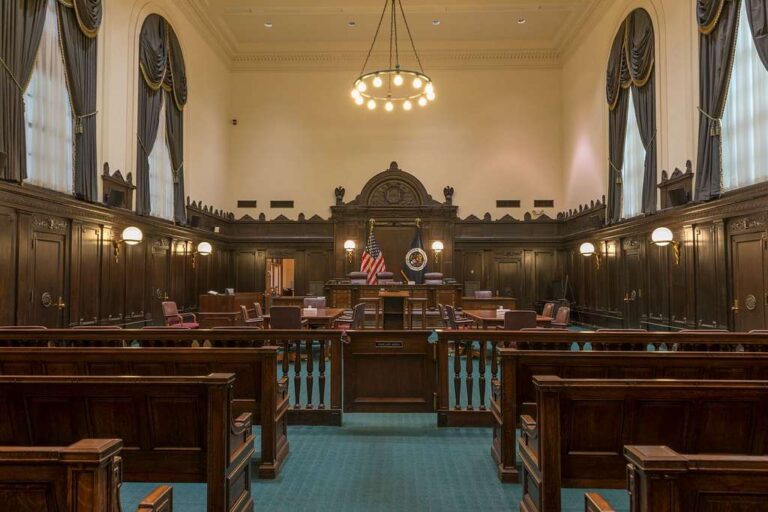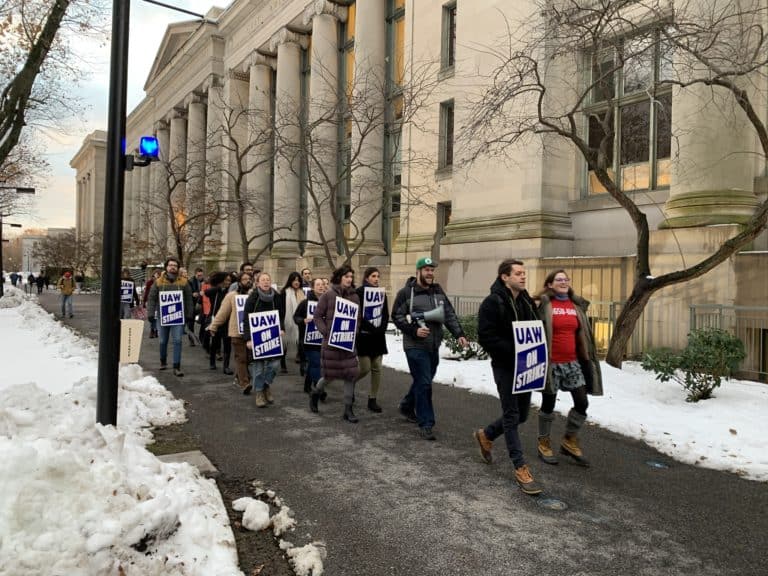
Holden Hopkins is a student at Harvard Law School.
In today’s News & Commentary, the anti-union campaign picks up ahead of next week’s vote at Mercedes Benz in Alabama, Vermont passes its version of the PRO Act, and the NLRB’s new joint-employer rule survives a legislative challenge.
Despite claiming neutrality, Mercedes Benz along with the Business Council of Alabama, a pro-employer advocacy group, have launched an advertising blitz urging autoworkers to vote no in next week’s union election. Alabama elected officials, including Governor Kay Ivey, have also urged workers to vote no.
Holt and others have previously reported on the union drive at the Vance, Alabama plant. While the outside pressure has picked up, union organizers are feeling encouraged in the wake of last month’s UAW win in Tennessee.
The election is scheduled for May 13 – 17.
The Vermont legislature passed a bill inspired by the proposed federal “Protecting the Right to Organize”, or PRO Act, most recently sponsored in the US Senate by Vermont Senator Bernie Sanders. The state’s version of the bill, called S.102, bans captive audience meetings, allows card checks for public sector unions, and extends organizing rights to domestic workers excluded from coverage under the NLRA.
The Vermont House of Representatives passed S.102 on Wednesday which the state Senate had passed last year. Despite the original bill including coverage for agricultural workers, who like domestic workers were excluded from the NLRA, an amendment to the House version removed them from the bill. Interest groups including the Vermont Dairy Producers Alliance raised concerns about strikes of agricultural workers disrupting supply chains or causing animal welfare issues.
Organizers with Migrant Justice called the inclusion of agricultural workers “a basic question of equity, fairness and justice.” The exclusion of domestic and agricultural workers from the federal legislation was the result of a compromise with Southern Democrats, who feared labor protections would upset the Jim Crow-era political order. At the time, industry groups also made arguments for the exclusion of agricultural workers which resemble those advanced in Vermont.
While agricultural workers are not treated as employees under S.102, the bill does establish the “Agricultural Worker Labor and Employment Laws Study Committee”. The purpose of that committee is to study how state labor and employment laws apply to agricultural workers and identify options for legislative action to increase coverage.
Other provisions of the bill—which passed with a veto-proof majority—have received praise from pro-union advocacy groups.
The NLRB’s joint-employer rule has survived a legislative challenge following President Biden’s veto of a Congressional measure to overturn the rule. Bloomberg Law reported on Tuesday that the Republican-controlled House of Representatives would be unable to achieve the two-thirds majority required to overcome that veto. The rule was originally challenged under the Congressional Review Act, as Swap reported in January.
While legislative challenges to the rule appear to be exhausted, it still faces judicial hurdles. As John reported, the rule is currently on hold following a challenge in the Eastern District of Texas. Today, the NLRB announced they are appealing that decision to the 5th Circuit.






Daily News & Commentary
Start your day with our roundup of the latest labor developments. See all
November 25
In today’s news and commentary, OSHA fines Taylor Foods, Santa Fe raises their living wage, and a date is set for a Senate committee to consider Trump’s NLRB nominee. OSHA has issued an approximately $1.1 million dollar fine to Taylor Farms New Jersey, a subsidiary of Taylor Fresh Foods, after identifying repeated and serious safety […]
November 24
Labor leaders criticize tariffs; White House cancels jobs report; and student organizers launch chaperone program for noncitizens.
November 23
Workers at the Southeastern Pennsylvania Transportation Authority vote to authorize a strike; Washington State legislators consider a bill empowering public employees to bargain over workplace AI implementation; and University of California workers engage in a two-day strike.
November 21
The “Big Three” record labels make a deal with an AI music streaming startup; 30 stores join the now week-old Starbucks Workers United strike; and the Mine Safety and Health Administration draws scrutiny over a recent worker death.
November 20
Law professors file brief in Slaughter; New York appeals court hears arguments about blog post firing; Senate committee delays consideration of NLRB nominee.
November 19
A federal judge blocks the Trump administration’s efforts to cancel the collective bargaining rights of workers at the U.S. Agency for Global Media; Representative Jared Golden secures 218 signatures for a bill that would repeal a Trump administration executive order stripping federal workers of their collective bargaining rights; and Dallas residents sue the City of Dallas in hopes of declaring hundreds of ordinances that ban bias against LGBTQ+ individuals void.